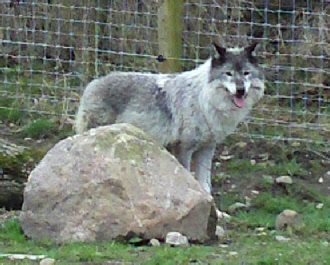



Wolves were once the most widely distributed mammal on Earth, but the spread and growth of human population has drastically reduced their range and numbers to the point where they have completely vanished from many of their original habitats.

Wolves are strong, clever apex predators. They co-operate to make themselves particularly successful hunters, able to defend their kills against much larger individual animals.
DNA and historical evidence suggests that they were first tamed in China around 16,300 years ago and are the exclusive ancestral species to dogs.
They will out compete even the largest dog however in terms of strength, fighting ability and observational learning. They can recognise whether humans they encounter are carrying weapons just by sensing their confidence and demeanour and then act accordingly.
Wolves cannot be fully domesticated like dogs. They are unpredictable, particularly with infants, and become progressively less tolerant of non- members of their pack as they age.
Whereas dogs learn to respond to verbal commands wolves react more to signs and actions and humans can inadvertently convey the wrong signals to a wolf.
The only significant threats to wolves in the wild come from humans and tigers. A pack of wolves can even kill and eat the largest bears and their cubs.
When we refer to a wolf we are talking about the Grey Wolf species,of which there are 39 recognised sub-species. These can be divided into two distinct categories
(1) The Northern Wolf... Now only found in North America, parts of Europe and Northern Asia. It has large canine teeth, a large brain and long fur.
(2) The Southern Wolf... Now found only in the Arabian Peninsula and Southern Asia. It has small canine teeth, a smaller head and brain and short fur.
The wolves at Wales Ape and Monkey Sanctuary are Timber Wolves from Canada and the USA and are Northern Wolves. Up to 2 million wolves are kept in private zoos or as pets in the USA alone.